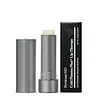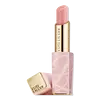What's inside
What's inside
 Key Ingredients
Key Ingredients

 Benefits
Benefits

 Concerns
Concerns

 Ingredients Side-by-side
Ingredients Side-by-side

Cocos Nucifera Oil
MaskingBeeswax
Emulsion StabilisingSimmondsia Chinensis Seed Oil
EmollientRicinus Communis Seed Oil
MaskingHelianthus Annuus Seed Oil
EmollientPolyethylene
AbrasivePolyhydroxystearic Acid
EmulsifyingAcrylates Copolymer
Ethylhexyl Palmitate
EmollientVanillin
MaskingArgania Spinosa Kernel Oil
EmollientAstrocaryum Murumuru Seed Butter
EmollientButyrospermum Parkii Butter
Skin ConditioningOryza Sativa Bran Extract
Skin Conditioning1,2-Hexanediol
Skin ConditioningCaprylyl Glycol
EmollientPhosphatidylcholine
EmulsifyingTocopherol
AntioxidantGlycine Soja Oil
EmollientTribehenin
EmollientRosmarinus Officinalis Leaf Extract
AntimicrobialOctyldodecanol
EmollientSorbitan Isostearate
EmulsifyingHelianthus Annuus Extract
EmollientSilica Dimethyl Silylate
EmollientQuaternium-90 Bentonite
Butylene Glycol
HumectantPentylene Glycol
Skin ConditioningLactic Acid
BufferingMethyl Nicotinate
SoothingPropylene Carbonate
SolventSodium Hyaluronate
HumectantPalmitoyl Tripeptide-1
Skin ConditioningCaffeine
Skin ConditioningNiacin
SmoothingAscorbyl Palmitate
AntioxidantCitric Acid
BufferingCocos Nucifera Oil, Beeswax, Simmondsia Chinensis Seed Oil, Ricinus Communis Seed Oil, Helianthus Annuus Seed Oil, Polyethylene, Polyhydroxystearic Acid, Acrylates Copolymer, Ethylhexyl Palmitate, Vanillin, Argania Spinosa Kernel Oil, Astrocaryum Murumuru Seed Butter, Butyrospermum Parkii Butter, Oryza Sativa Bran Extract, 1,2-Hexanediol, Caprylyl Glycol, Phosphatidylcholine, Tocopherol, Glycine Soja Oil, Tribehenin, Rosmarinus Officinalis Leaf Extract, Octyldodecanol, Sorbitan Isostearate, Helianthus Annuus Extract, Silica Dimethyl Silylate, Quaternium-90 Bentonite, Butylene Glycol, Pentylene Glycol, Lactic Acid, Methyl Nicotinate, Propylene Carbonate, Sodium Hyaluronate, Palmitoyl Tripeptide-1, Caffeine, Niacin, Ascorbyl Palmitate, Citric Acid
Ricinus Communis Seed Oil
MaskingGlyceryl Triacetyl Ricinoleate
EmollientCetyl Ricinoleate
EmollientEuphorbia Cerifera Wax
Bis-Diglyceryl Polyacyladipate-2
EmollientCopernicia Cerifera Wax
Polyethylene
AbrasiveEthylhexyl Palmitate
EmollientTriticum Vulgare Bran Extract
Skin ConditioningOlea Europaea Fruit Extract
BleachingPalmitoyl Tripeptide-1
Skin ConditioningButylene Glycol
HumectantCholesterol
EmollientGlyceryl Stearate
EmollientTribehenin
EmollientLauryl Methacrylate/Glycol Dimethacrylate Crosspolymer
Sodium Hyaluronate
HumectantPotassium Sulfate
Oleic Acid
EmollientSilica Dimethyl Silylate
EmollientPalmitic Acid
EmollientTocopheryl Acetate
AntioxidantVanillin
MaskingPentaerythrityl Tetra-Di-T-Butyl Hydroxyhydrocinnamate
AntioxidantSorbitan Isostearate
EmulsifyingAroma
Mica
Cosmetic ColorantCI 77891
Cosmetic ColorantCI 45380
Cosmetic ColorantCI 17200
Cosmetic ColorantCI 75470
Cosmetic ColorantRicinus Communis Seed Oil, Glyceryl Triacetyl Ricinoleate, Cetyl Ricinoleate, Euphorbia Cerifera Wax, Bis-Diglyceryl Polyacyladipate-2, Copernicia Cerifera Wax, Polyethylene, Ethylhexyl Palmitate, Triticum Vulgare Bran Extract, Olea Europaea Fruit Extract, Palmitoyl Tripeptide-1, Butylene Glycol, Cholesterol, Glyceryl Stearate, Tribehenin, Lauryl Methacrylate/Glycol Dimethacrylate Crosspolymer, Sodium Hyaluronate, Potassium Sulfate, Oleic Acid, Silica Dimethyl Silylate, Palmitic Acid, Tocopheryl Acetate, Vanillin, Pentaerythrityl Tetra-Di-T-Butyl Hydroxyhydrocinnamate, Sorbitan Isostearate, Aroma, Mica, CI 77891, CI 45380, CI 17200, CI 75470
Ingredients Explained
These ingredients are found in both products.
Ingredients higher up in an ingredient list are typically present in a larger amount.
Butylene Glycol (or BG) is used within cosmetic products for a few different reasons:
Overall, Butylene Glycol is a safe and well-rounded ingredient that works well with other ingredients.
Though this ingredient works well with most skin types, some people with sensitive skin may experience a reaction such as allergic rashes, closed comedones, or itchiness.
Learn more about Butylene GlycolEthylhexyl Palmitate, also known as octyl palmitate, is created from 2-ethylhexyl alcohol and palmitic acid. It is a fatty acid ester.
The fatty acid content of Ethylhexyl Palmitate makes it an emollient. Emollients help soften and hydrate your skin by trapping moisture within.
Ethylhexyl Palmitate is also used to help improve the texture of cosmetics. It helps other ingredient dissolve in products and help disperse ingredients more evenly.
You'll likely find this ingredient in sunscreen, as it is often used to mix UV-blocking ingredients such as avobenzone and ethylhexyl triazone.
It can also help stabilize the fragrances in a product as a fragrance fixative.
Ethylhexyl Palmitate can be used to substitute mineral oil.
Due to its high fatty acid content, it may not be fungal-acne safe.
Learn more about Ethylhexyl PalmitatePalmitoyl Tripeptide-1 is also known as pal-GHK. It is made up of 3 amino acids and palmitic acid, a fatty acid that helps it absorb into skin more easily.
This peptide is as a signal peptide, meaning it tells the skin to produce more collagen. Collagen is the key protein that helps form the skin's structure and keep it plump, firm, and hydrated.
By boosting collagen production, this ingredient supports a stronger skin barrier and helps reduce the appearance of wrinkles.
You'll most likely see this ingredient paired with Palmitoyl Tetrapeptide-7 in the well-known Matrixyl 3000 complex. While results from in-house testing should be viewed cautiously, this peptide duo is among the most studied and widely used in modern skincare.
Due to its palmitic acid base, this ingredient may not be safe for Malassezia folliculitis.
Read more about other common types of peptides here:
Learn more about Palmitoyl Tripeptide-1Polyethylene is a synthetic ingredient that helps the skin retain moisture. It is a polymer.
It is also typically used within product formulations to help bind solid ingredients together and thicken oil-based ingredients. When added to balms and emulsions, it helps increase the melting point temperature.
Ricinus Communis Seed Oil is the INCI name for castor oil.
Castor Oil helps moisturize the skin. It is rich in a fatty acid called ricinoleic acid. This fatty acid helps prevent moisture loss on the skin. This helps keep your skin soft and hydrated. Ricinoleic acid also has anti-inflammatory and pain reducing properties.
Besides hydrating the skin, castor oil is also used to hydrate hair. By keeping the hair shaft moisturized, breakage is decreased. More studies are needed to show castor oil's effective on stimulating hair growth.
Castor oil is created by cold-pressing castor seeds and then purifying the oil with heat. It was used in Ancient Egypt as fuel in lamps and to help treat eye irritation.
The term 'fragrance' is not regulated in many countries. In many cases, it is up to the brand to define this term. For instance, many brands choose to label themselves as "fragrance-free" because they are not using synthetic fragrances. However, their products may still contain ingredients such as essential oils that are considered a fragrance.
Learn more about Ricinus Communis Seed OilThis silica is mainly used to thicken oils and suspend particles in oils. It is not water soluble.
According to the manufacturer, it:
The manufacturer also claims this ingredient to be useful in makeup.
In lipstick formulations, this ingredient improves color payoff, reduces pigment settling, and reduces oil bleeding. This ingredient also improves the grip of powder products such as dry shampoos.
Learn more about Silica Dimethyl SilylateSodium Hyaluronate is hyaluronic acid's salt form. It is commonly derived from the sodium salt of hyaluronic acid.
Like hyaluronic acid, it is great at holding water and acts as a humectant. This makes it a great skin hydrating ingredient.
Sodium Hyaluronate is naturally occurring in our bodies and is mostly found in eye fluid and joints.
These are some other common types of Hyaluronic Acid:
Learn more about Sodium HyaluronateSorbitan Isostearate is an emulsifer and cleaning agent. It is created from isostearic acid and sorbitol.
As an emulsifier, Sorbitan Isostearate prevents oils and water from separating.
Due to its isostearic acid base, it may not be safe for Malassezia or fungal acne.
Learn more about Sorbitan IsostearateTribehenin comes from glycerin and behenic acid.
It is used as an emollient, or moisturizer. Emollients form a thin barrier on skin to prevent moisture from escaping.
This ingredient may not be Malassezia folliculitis, or fungal-acne safe.
Learn more about TribeheninVanillin is the main compound of the vanilla bean. It is naturally occuring but can also be artificially created.
This ingredient exhibits antioxidant properties but is also a known skin-irritant.
Vanillism is the term of contact-dermatitis associated with the vanilla plant. The sap of the vanilla plant triggers skin irritation, swelling, and redness.
Learn more about Vanillin